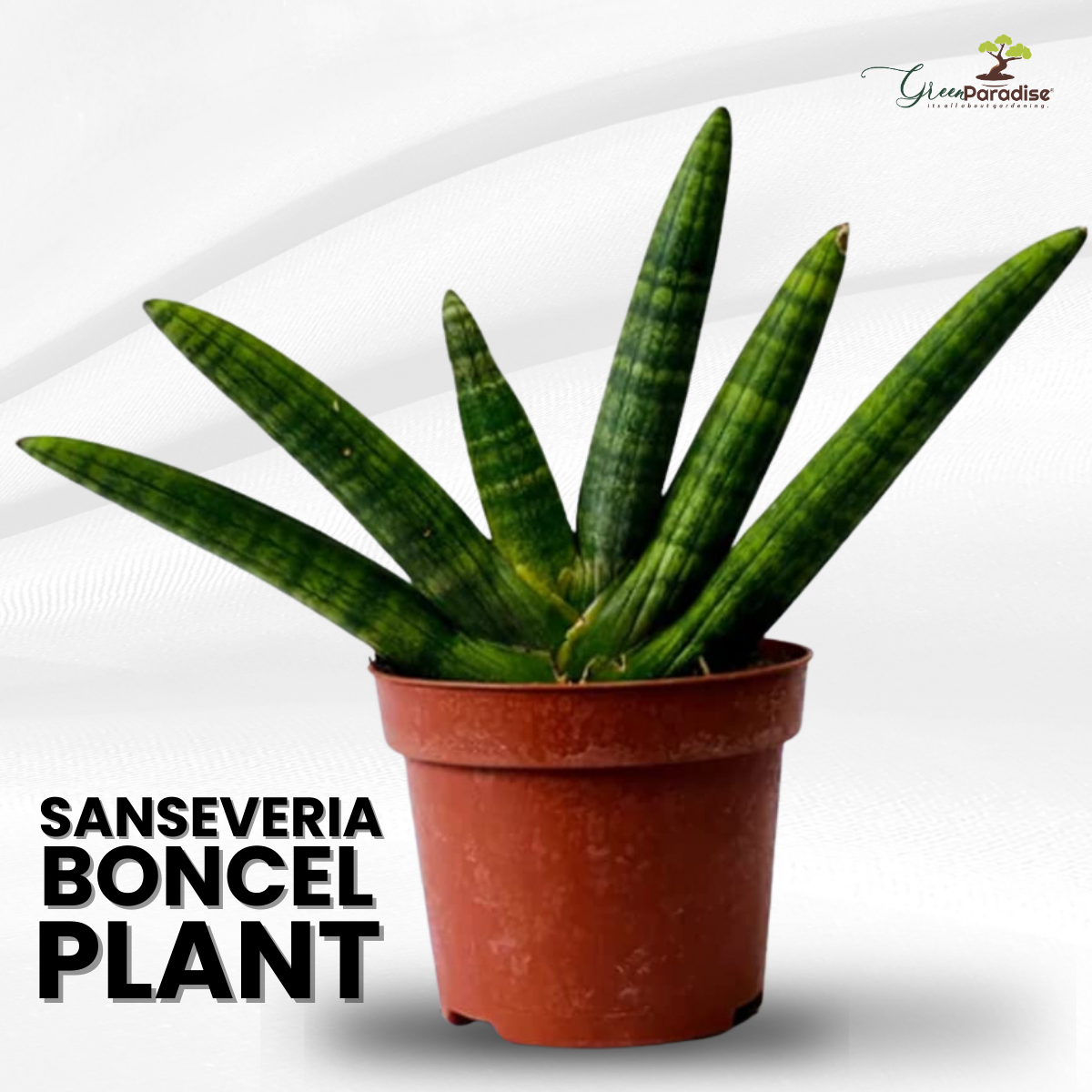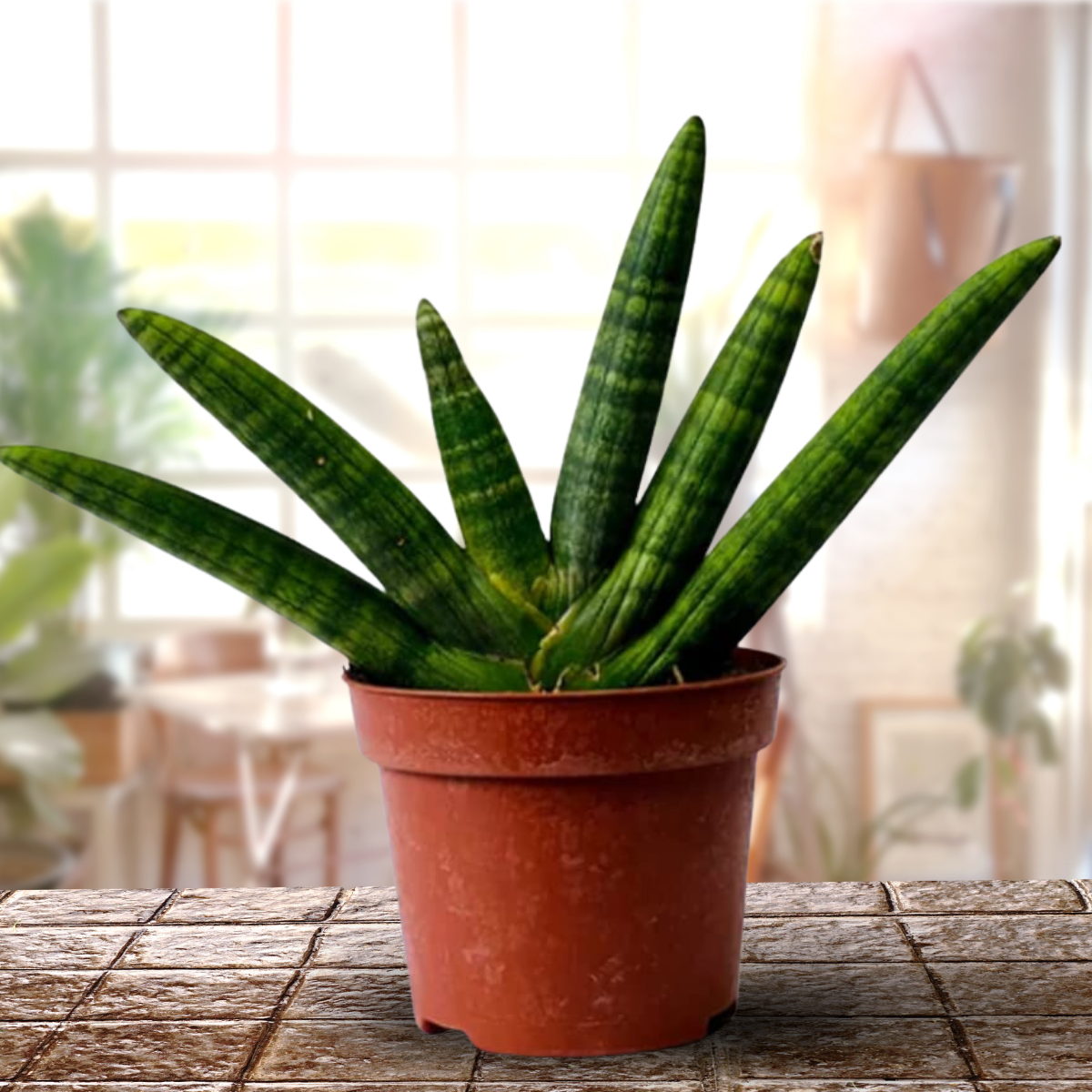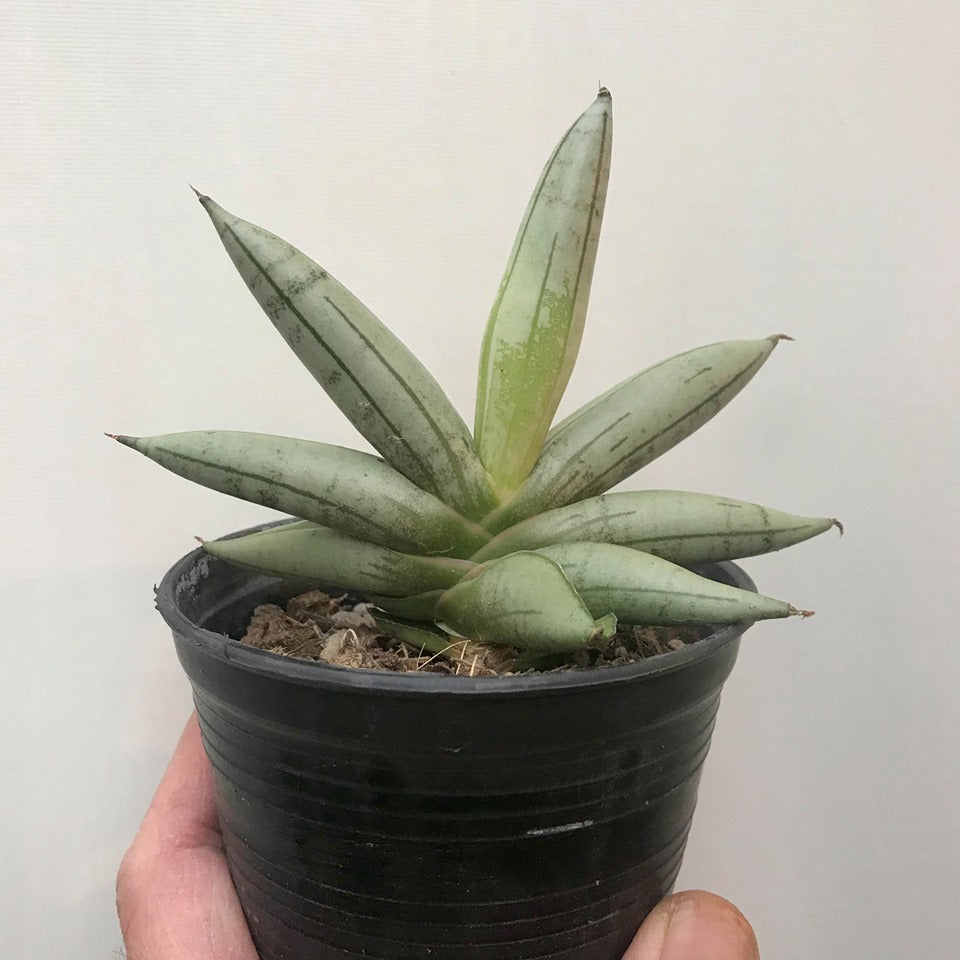




Green Paradise Offers Healthy Sansevieria Boncel Plant
About Sansevieria Plant
Sansevieria boncel, also known as the Boncel snake plant or dwarf snake plant, is a popular cultivar of the Sansevieria genus. It is a compact and miniature version of the common snake plant (Sansevieria trifasciata) and is highly valued for its unique appearance and ease of care.
Here are some key characteristics and features of the Sansevieria boncel plant:
Size and Appearance:
-
The Boncel snake plant is much smaller compared to other varieties of snake plants.
-
It typically grows to a height of about 6-8 inches (15-20 cm) with slender, cylindrical leaves.
-
The leaves have a distinctive dark green color and are banded with light green or pale yellow edges.
Growth Pattern:
-
This plant grows in a rosette pattern, with the leaves emerging from a central base.
-
The leaves are stiff and pointed, and they grow upright or slightly arching.
Low Maintenance:
-
Like other snake plants, Sansevieria boncel is known for its ability to tolerate a wide range of growing conditions.
-
It is an excellent choice for beginners or those who may not have a green thumb.
-
The plant is quite forgiving and can thrive in low light conditions and irregular watering.
-
It is also tolerant of neglect and can withstand periods of drought.
Indoor and Outdoor Plant:
-
Sansevieria boncel is primarily grown as an indoor plant due to its smaller size.
-
It is frequently used as a decorative plant in homes, offices, and other indoor settings.
-
However, in warmer climates, it can be grown outdoors in gardens or as part of a landscape.
Air Purifying Properties:
-
Like other snake plants, Sansevieria boncel is known for its air-purifying qualities.
-
It can help remove toxins such as formaldehyde, benzene, xylene, and trichloroethylene from the air, making it a beneficial plant for improving indoor air quality.
Propagation:
-
The Boncel snake plant can be propagated through leaf cuttings or by dividing the rhizomes.
-
Leaf cuttings can be rooted in water or directly planted in well-draining soil.
-
The plant is relatively slow-growing, so it may take some time for new growth to emerge.
Toxicity:
-
While Sansevieria boncel is not highly toxic, it is still advisable to keep it away from children and pets. Ingesting the plant may cause mild gastrointestinal upset.
Sansevieria boncel, or the Boncel snake plant, is a compact and charming variety of the snake plant family. It is known for its small size, low maintenance requirements, air-purifying abilities, and attractive foliage. Whether used as an indoor or outdoor plant, it adds a touch of greenery and elegance to any space.
How To Grow Sansevieria Boncel Plant
Sansevieria boncel, also known as the dwarf snake plant or snake plant boncel, is a popular houseplant known for its thick, compact leaves.
Here are some general guidelines on how to grow and care for a Sansevieria boncel plant:
Lighting:
-
Sansevieria boncel thrives in bright, indirect light.
-
Place it near a window that receives filtered sunlight or in a well-lit room. Still, it can tolerate low-light conditions as well.
Temperature:
-
This plant prefers average to warm temperatures between 65°F (18°C) and 85°F (29°C). cover it from drafts and cold air.
Watering:
-
Sansevieria boncel is a drought-tolerant plant and is susceptible to root rot if overwatered.
-
Between waterings, allow the soil to dry out.
-
Water completely and also let the redundant water drain down.
-
Reduce watering during the winter months.
Soil:
-
Use a well-draining potting mix for Sansevieria boncel.
-
A blend of regular replanting soil and perlite or beach works well.
-
Avoid using heavy, water-retentive soils.
Potting and repotting:
-
When potting or repotting, choose a container with drainage holes to prevent waterlogging.
-
Sansevieria boncel prefers slightly crowded conditions, so you don't need to rush to report it.
-
Repot every two to three years or when the plant outgrows its current pot.
Fertilizer:
-
Sansevieria boncel doesn't require frequent fertilization.
-
Feed it with a balanced, water-soluble fertilizer diluted to half strength during the growing season (spring and summer) once a month.
-
Avoid fertilizing during winter.
Humidity:
-
Sansevieria boncel is adaptable to a wide range of humidity levels and can tolerate dry air.
-
Normal household humidity is usually sufficient.
Pruning:
-
Trim any dead or damaged leaves as necessary to maintain the plant's appearance.
-
Clean, sharp scissors or pruning shears should be used.
Pests and diseases:
-
Sansevieria boncel is relatively pest and disease resistant.
-
However, keep an eye out for common houseplant pests such as spider mites, mealybugs, and scale insects.
-
If an infestation occurs, treat it with an appropriate insecticidal soap or horticultural oil.
Propagation:
-
Sansevieria boncel can be propagated through leaf cuttings.
-
Cut a healthy leaf into sections and plant them in a well-draining soil mix.
-
Water sparingly until new growth appears.
Remember that while these guidelines provide a general overview, specific care requirements may vary based on your climate, indoor conditions, and the individual needs of your Sansevieria boncel plant. Monitoring the plant's health and adjusting care accordingly will help ensure its well-being.




